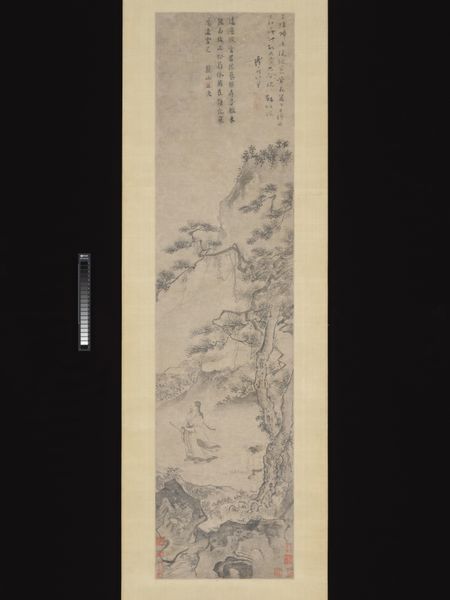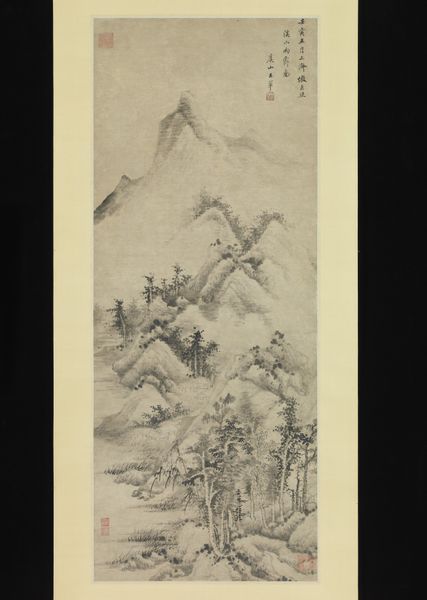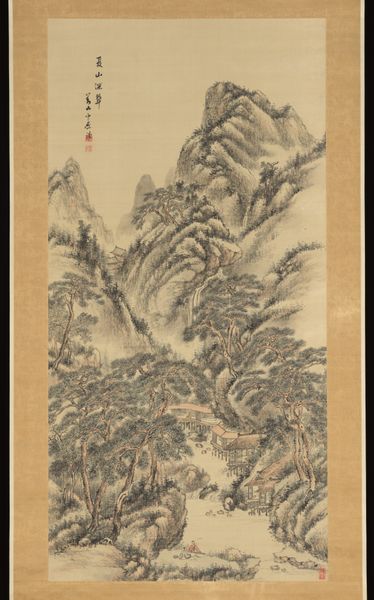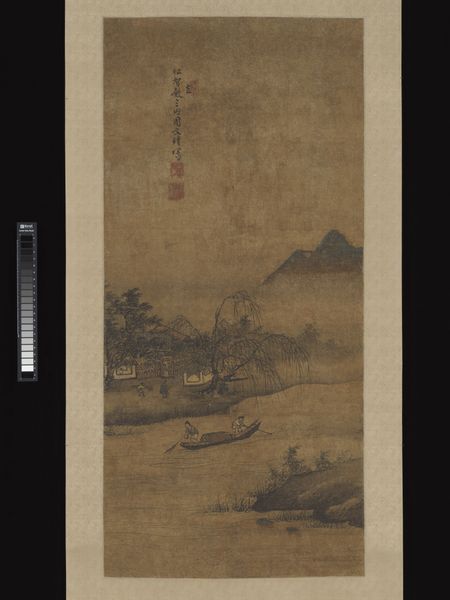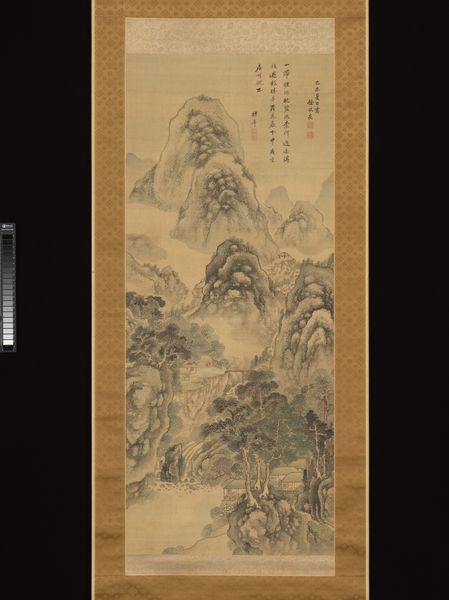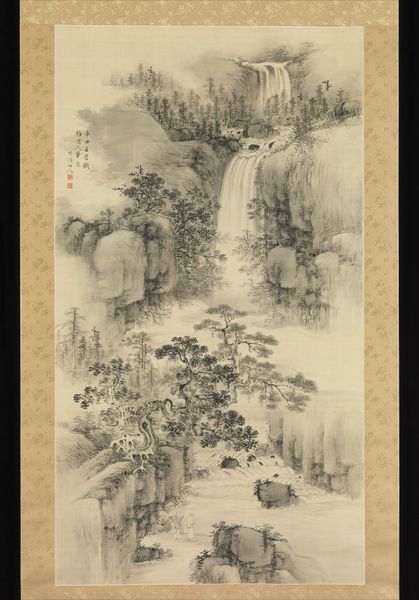
Lofty Scholar among Streams and Mountains, in the manner of Juran 1667 - 1699
0:00
0:00
painting, ink
#
painting
#
asian-art
#
landscape
#
ink
#
mountain
Dimensions: Image: 72 x 33 in. (182.9 x 83.8 cm) Overall with mounting: 107 1/2 x 38 1/4 in. (273.1 x 97.2 cm) Overall with knobs: 107 1/2 x 42 1/2 in. (273.1 x 108 cm)
Copyright: Public Domain
Editor: So, here we have Wang Jian’s "Lofty Scholar among Streams and Mountains, in the manner of Juran," done between 1667 and 1699, using ink on, presumably, paper. It’s very detailed, almost photo-realistic in some sections, and evokes such a calm, quiet mood. How do you interpret this work, beyond the beautiful scene? Curator: Well, beyond the technical skill and beauty, we need to consider the political and social environment of the time. Wang Jian, like many literati painters of his era, worked during a period of immense upheaval. The fall of the Ming dynasty and subsequent rise of the Qing dynasty created a complex dynamic for artists. This “retreat” into landscape wasn't always apolitical; sometimes it became a subtle form of resistance. Do you notice any element that suggests a yearning for an idealized past, perhaps a coded message within the natural imagery? Editor: I guess I see that in the scholar figure, like he’s intentionally removed from the world's problems? The mountains seem like they’re protecting him, or he is trying to detach himself. Is the "Lofty Scholar" idealized or actually an expression of something critical of society? Curator: Exactly. Consider how this landscape draws from earlier masters like Juran. Wang Jian isn't simply copying; he's engaging in a dialogue with history, appropriating the artistic language of the past to perhaps critique the present, or offer a vision of steadfastness amidst political instability. Think about the implications of choosing a "lofty scholar" as the central figure during a time when many scholars faced difficult choices about loyalty and service. Editor: So it is a visual comment, and it uses the past as a subtle language to address present issues. I hadn’t considered that. It adds so much more meaning to the work. Curator: Indeed. It highlights the crucial role of art as a site of cultural memory and commentary, deeply entwined with power structures and individual identities. Editor: I'm leaving with an entirely different understanding of how to view this painting. Thank you.
Comments
No comments
Be the first to comment and join the conversation on the ultimate creative platform.

